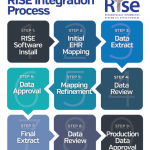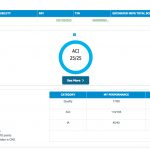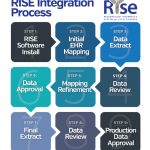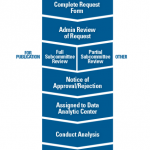As medical professionals, we understand the impact quality research can have on how we care for our patients. The extensive adoption of electronic health records (EHRs) has enabled the collection of big data in rheumatology. This has provided a new and unique opportunity for the rheumatology community to conduct in-depth research into how patients are being managed by their healthcare providers and with what success. The ACR is now allowing use of de-identified data from the Rheumatology Informatics System for Effectiveness (RISE) Registry to better understand patient care.
The Registry
The ACR developed the RISE Registry as a tool to help providers improve their quality of patient care and also meet certain federal reporting requirements. The registry works by automatically extracting data entered during the course of routine clinical care on all patients from the EHR systems of participating providers and transferring the data to a central database. The data are then mined, and the results are used to populate an analytic dashboard that shows relative performance on a variety of measures that assess quality of patient care.
RISE has been certified by the Centers for Medicare and Medicaid Services (CMS) as a Qualified Clinical Data Registry (QCDR) since 2014 and is Merit-Based Incentive Payment System (MIPS) capable. Therefore, providers can also track their estimated scores and meet their federal reporting requirements for the MIPS program to CMS (see Figure 1).
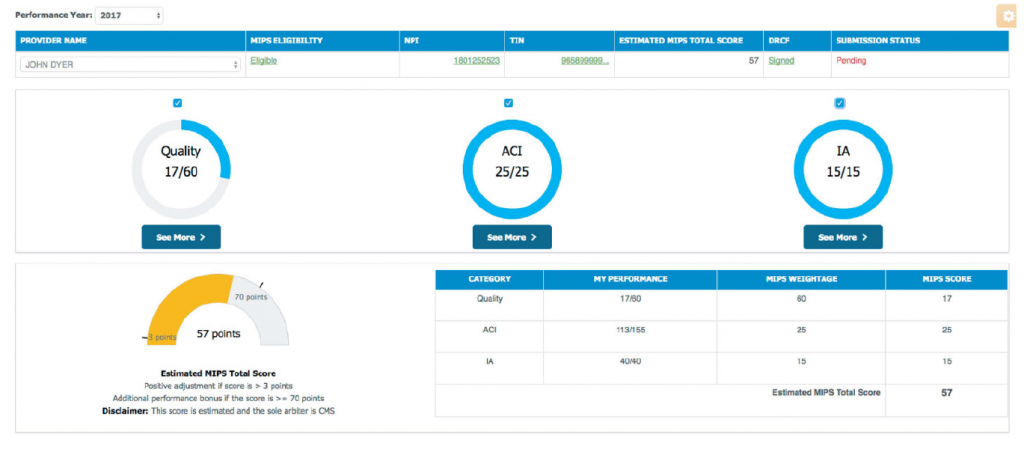
(click for larger image)
Figure 1: MIPS Provider Dashboard
RISE will allow providers to track estimated scores in the various MIPS components based on their EHR data and other data they input into the RISE dashboards.
The RISE Registry has approximately 750 providers fully connected and approximately 100 more in various stages of getting connected. With 1.1 million patients and more than 6 million patient encounters in its database, the RISE Registry has become the world’s largest repository of rheumatology patient data. In addition to containing data on a large number of patients with such diseases as rheumatoid arthritis (about 230,000 patients and 1.7 million patient encounters), a significant number of patients with relatively rare diseases, such as scleroderma (5,804) and Behçet’s disease (779), is represented.
RISE also serves as a unique and rich data source with many advantages. First and foremost, it collects real-world clinical data that show what rheumatology providers are actually doing in their practices. Second, RISE collects data via automatic extraction, meaning it contains all data that providers enter into their EHR systems during the course of clinical care without a need for dual entry or having providers pick and choose the data and/or patients included in the registry, thereby reducing selection bias.
The Data Available
To help facilitate data validation and analysis, the ACR has contracted with three Data Analytic Centers. These centers, at Duke University, University of Alabama at Birmingham and University of California, San Francisco, bring unique expertise in working with large data sets.
The RISE Registry data are robust and can be used for many different kinds of investigations, such as comparative-effectiveness research, post-market surveillance,
medication patterns/biosimilars, quality improvement, outcomes research and value-based care, to name but a few. The ACR has conducted some initial projects delving into RISE data.
In an article published in Arthritis Care & Research, the ACR reviewed, among other things, the demographics of and various diagnostic codes for RISE patients.1 In the article, the authors noted that although prevalent rheumatologic diseases are well represented in RISE, a registry strength is that it has a large amount of data on individuals with less common diseases, such as inflammatory muscle diseases and vasculitides. These data will be valuable in furthering our understanding of the natural history, treatment and outcomes of these conditions.
At the 2016 ACR/ARHP Annual Meeting, the ACR presented a poster on identifying and characterizing patients in the RISE Registry with systemic lupus erythematosus (SLE) or undifferentiated connective tissue disease (UCTD).2 It was determined that although diagnostic codes could be used to identify a large population of potential patients, disease classification for patients could be improved by including other data elements available through RISE, such as medications prescribed, laboratory tests, etc.
Efforts to refine phenotyping algorithms for rheumatic diseases in RISE are ongoing, and we anticipate that disease characterization in RISE will become increasingly granular and accurate.
More recently, in data presented at a plenary session at the 2016 ACR/ARHP Annual Meeting and updated for a presentation at EULAR in 2017, the ACR evaluated the latest trends in average performance of practices on the quality measures in RISE over time.3 Practices participating in RISE have had significant improvements in performance on many quality measures. An example of this trend can be seen in Figure 2. RISE will allow rheumatologists to track their performance over time, positioning them to both succeed in the MIPS program and continuously improve the quality of care they deliver to their patients.
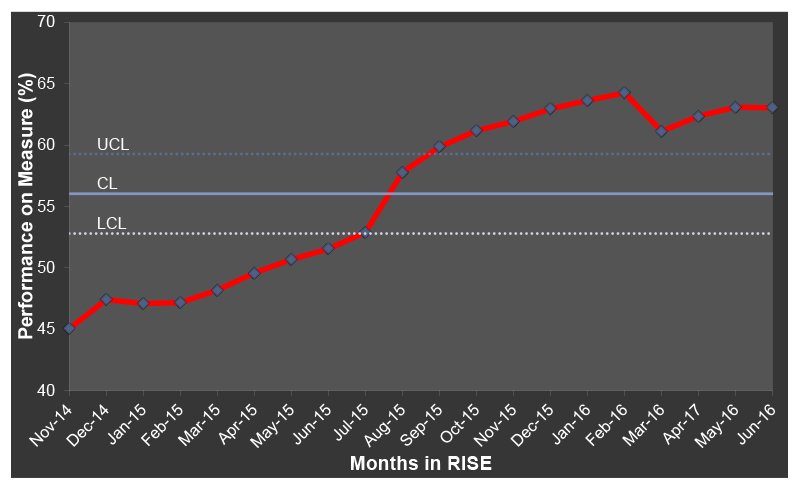
(click for larger image)
Figure 2: RA Disease Activity Measure Performance Chart
The ACR’s abstract examined data for 20 continuous months from the 44 practices that have been in RISE the longest. This chart shows their performance on the RA disease activity measure steadily improved over that time.
The ACR has done some illuminating and valuable initial work evaluating RISE data. It is clear that the trove of information collected through the registry is expansive and has the potential to vastly improve our understanding of how to provide the best quality of care for our patients. We hope to share even more discoveries from RISE data at the 2017 ACR/ARHP Annual Meeting.
Open for Business
The ACR looks forward to academic requests from researchers interested in publishing the results as part of a scientific presentation or manuscript and non-academic requests from those interested in the results for internal reference or use in marketing or advocacy materials. More information on available RISE data and how to request its use can be found by going to the RISE for Research section. If you have questions, contact [email protected]. Let the dialogues begin!
 Sharad Lakhanpal, MBBS, MD, is in private practice at Rheumatology Associates and a clinical professor of internal medicine at the University of Texas Southwestern Medical School, both in Dallas, where he has lived and worked since 1986. He is also the 80th president of the ACR (2016–17).
Sharad Lakhanpal, MBBS, MD, is in private practice at Rheumatology Associates and a clinical professor of internal medicine at the University of Texas Southwestern Medical School, both in Dallas, where he has lived and worked since 1986. He is also the 80th president of the ACR (2016–17).
References
- Yazdany J, Bansback N, Clowse M, et al. (2016), Rheumatology Informatics System for Effectiveness: A national informatics-enabled registry for quality improvement. Arthritis Care Res (Hoboken). 2016 Dec;68(12):1866–1873.
- Simard JF, Oates JC, Yazdany J, et al. Systemic lupus erythematosus and undifferentiated connective tissue disease in the RISE Registry. Poster presented at 2016 ACR/ARHP Annual Meeting. 2016 Nov 12–16; Washington, D.C.
- Yazdany J, Myslinski R, Johansson T, Kazi S. Practices participating in the ACR’s Rheumatology Informatics System for Effectiveness (RISE) national registry show improvements in quality of care. Lecture presented at 2017 Annual European Congress of Rheumatology. 2017 Jun 14–17; Madrid, Spain.
